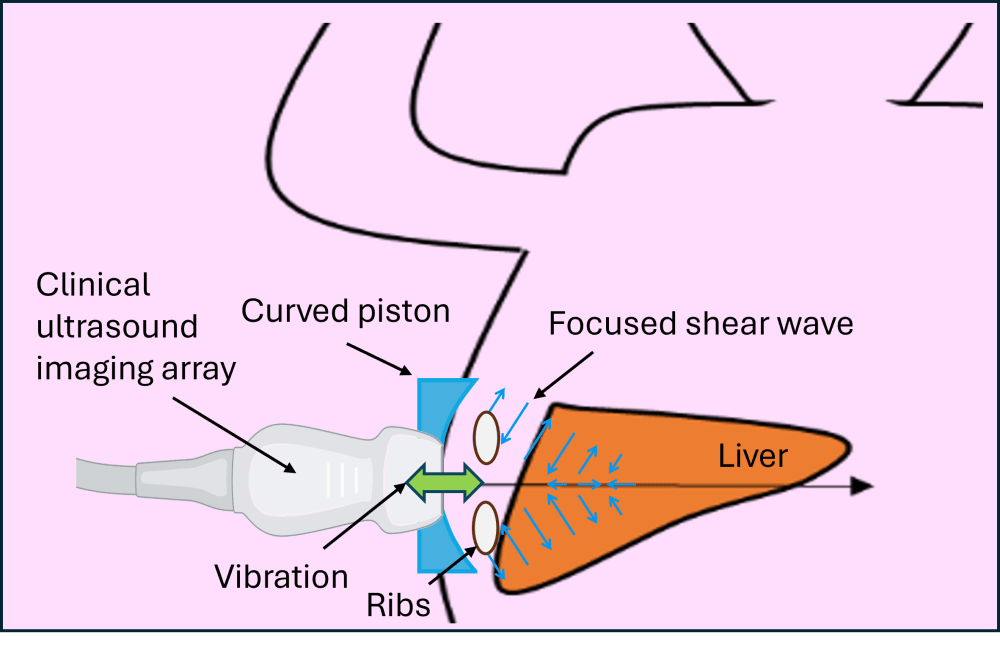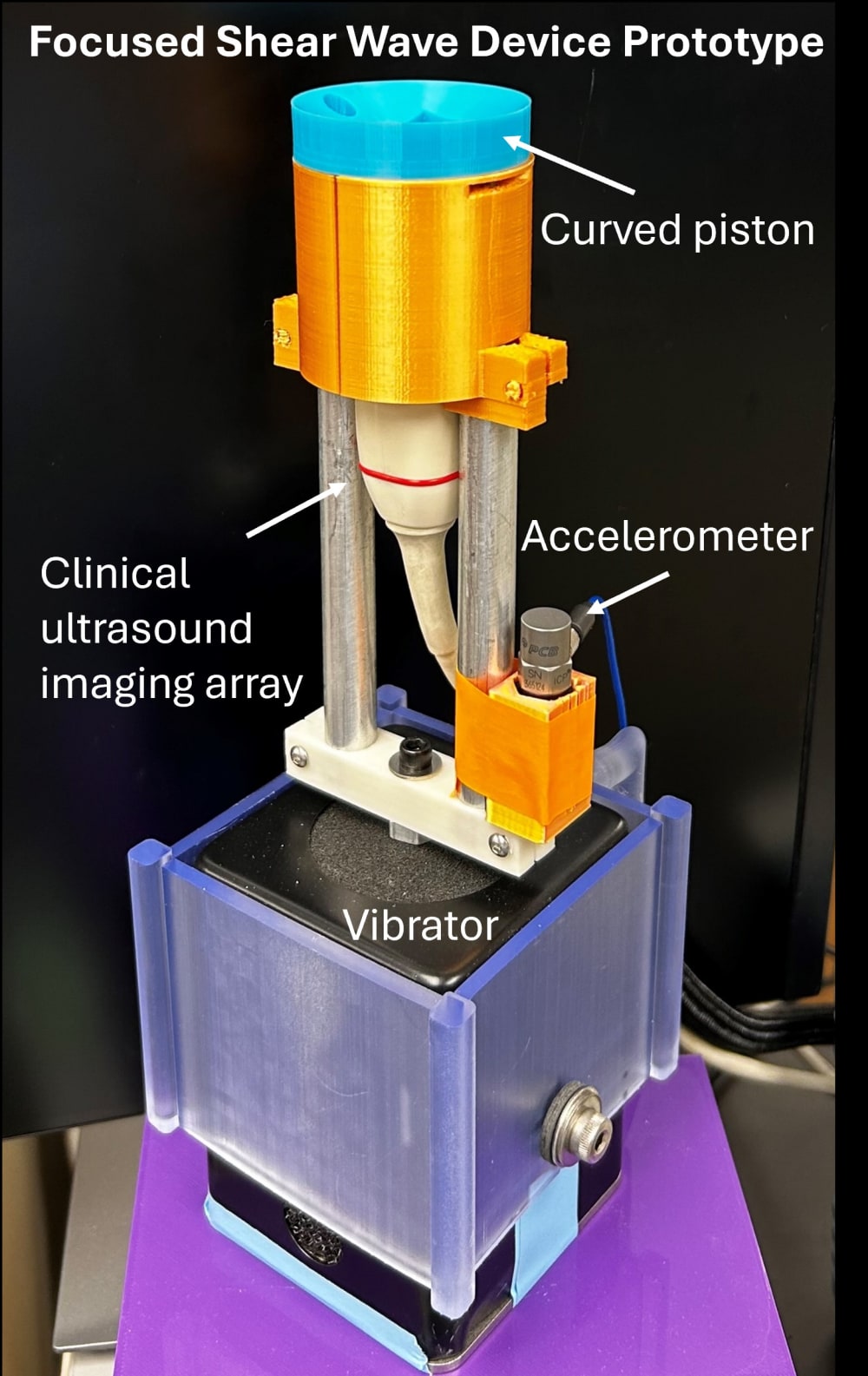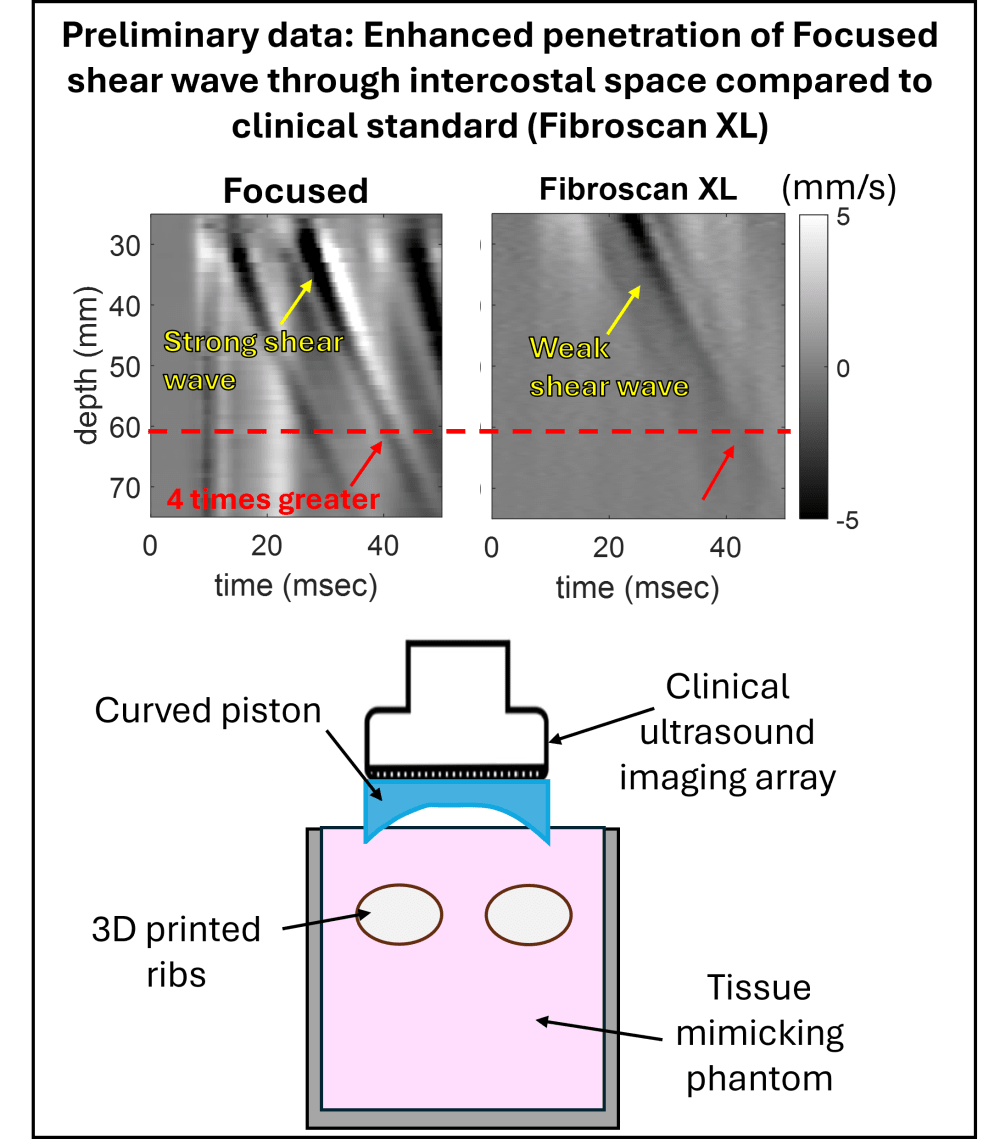
Liver diseases affect approximately one third of the worldwide adult population, and often remain undiagnosed until reaching severe stages due to the liver's lack of pain sensors. The current gold standard, biopsy, is invasive, expensive, and unsuitable for wide-scale screening. Non-invasive alternatives like ultrasound elastography can address this screening need. Scar accumulation in the liver tissue due to chronic disease alters liver tissue mechanical properties, which can be assessed with ultrasound elastography to serve as surrogate biomarkers for disease progression. However, the popular clinical device FibroScan, which utilizes transient elastography (TE) technique, struggles in high BMI patients with larger waist circumference.
Whereas the FibroScan uses diffuse, small-amplitude shear waves for TE, our innovation enhances TE by using a larger, concave piston to generate focused shear waves that converge towards the liver. This design improves wave penetration through the intercostal space, increasing signal available for scar (fibrosis) assessment even in patients with high waist circumference. The device integrates a mechanical vibrator, similar to a massage gun, with a clinical ultrasound imaging probe to measure liver stiffness along with anatomy, enabling early disease detection and intervention. Published proof-of-concept studies show the device’s potential in identifying various fibrosis stages, from mild to severe, in tissue-mimicking phantoms. We plan to conduct the first human study in the near future to further test this potential.
Further novelty of our approach lies in personalized piston head selection, optimized through focused shear wave simulation in a multilayered viscoelastic medium mimicking body anatomical structure. This ensures that this cost-effective diagnostic tool is available to individuals of any body size, promoting inclusivity and eliminating discrimination.
This non-invasive, portable solution can be manufactured using 3D-printed parts, a clinical ultrasound imaging array, and a sourced mechanical vibrator. It offers practical applications in family practices and clinics, addressing the growing market of patients with increasing body size and liver disease, which are associated with each other. By providing accurate, early diagnosis, our device can prevent liver failure and cancer through early intervention, offering significant market potential and improving patient outcomes.
-
Awards
-
 2024 Top 100 Entries
2024 Top 100 Entries
Like this entry?
-
About the Entrant
- Name:Yuhsuan Chao
- Type of entry:individual
- Patent status:pending









